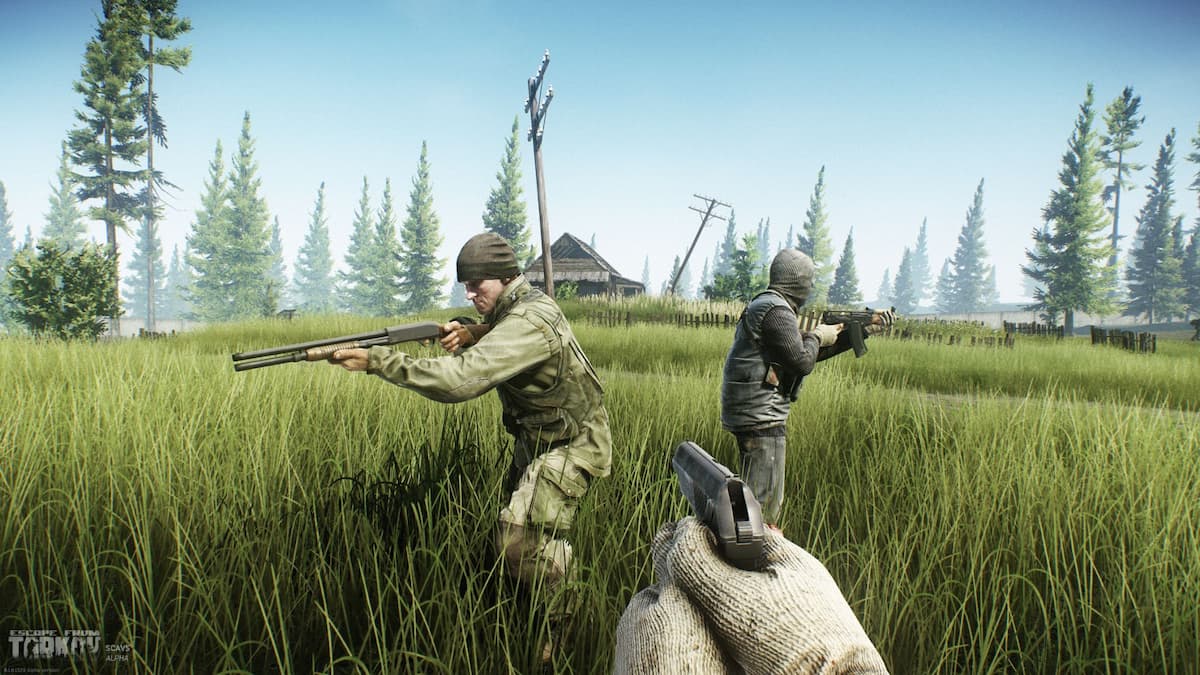We’ve all got that game we go to at the end of a really stressful week. It’s the one that makes you take out a blanket, stock up on snacks, and happily snuggle into the familiar world. For me, Yonder: The Cloud Catcher Chronicles is now one of these games. That’s not to say that me and Yonder didn’t get into a few arguments along the way, but the world is just so calming that I keep wanting to get back under my gaming blanket and return.
At first, I was unsure of what to expect. Yonder’s rather pitiful character creation only consisted of a few body sliders, while the introduction cutscene was rather cliché. Essentially, my little protagonist got shipwrecked on a journey back to their homeland. Here, the guardian spirit explained that the land of Gemea had been covered by a mysterious poison called The Murk, and only I had the power to stop it.
Throughout the world were patches of The Murk that could be dispelled if I’d found the necessary amount of Gemea’s hidden Sprites who could purify the land. Very few actually hindered progress though, meaning whether you completely dispel of each patch is up to you. In other words, the story is just a way to get your foot in the door.
While the generally loose plot didn’t bother me, I was disappointed by how throwaway the conclusion was. I’m sure the majority of my feelings came down to the mute protagonist, whom I had no personal attachment to. Yet the ‘reveal’ at the end was still very lacklustre, which didn’t reflect the heart that had gone into the rest of the game.

To be fair, Yonder never asked me to focus on the story. Instead, my attention was brought to the world itself. Gemea was introduced to me as I exited the cave from where my ship crashed. I don’t think anyone will miss the The Legend of Zelda: Breath of the Wild reference here, but it’s to the game’s credit that I smiled with glee at the beautiful world stretched out before me. It wasn’t long before I’d not only picked up all the basic gathering tools and began crafting, but had started work on my own farm and befriended animals.
It was also clear that there was no real threat in Yonder’s world. No health bar, levelling, or combat of any kind. Jump off a high point and the protagonist simply popped open a parasol with which to float down to safety. Having some kind of threat is normally the driving force in games, but Yonder turned this lack of action into a peaceful bubble of exploration. Not having to worry that some creature would suddenly spring out from the shadows allowed me to take my time in wondering through lush fields, farting bogs, and mysterious caves.
I allowed myself to relax and get distracted, be that from running after a new creature (Fabbits – round fat rabbits – are my new favourite cute thing), or heading after the twinkling lights of an undiscovered town. I even found myself stopping to stare up during a thunder storm as flashes of lighting streaked across the sky. Gemea was a living, breathing world, from its changing seasons that caused different animals to roam around, through to its populated environments.

Yonder wasn’t all aimless wondering though, there were plenty of quests and collectables to fulfil and discover. I was mildly amused by how none of the people seemed at all concerned that their home was being filled with poison. Instead, it was more important that I found one woman’s 55 cats, and helped another young lady to grow a magnificent beard.
The majority of quests couldn’t be completed without some crafting knowledge, which is actually where things started to slip. Scattered around Gemea were master crafters ready to teach the arts of cooking, carpentry, construction, tinkering, brewing, and tailoring.
Items needed for crafting could either be gathered from around the world, or traded for. Instead of handling money, I had to barter for items with the stuff I currently owned. The worth of an object was then linked to how far down the crafting line it was – so a stone was worth less than cobblestone, which was less than a building. The idea is that you’re rewarded for spending time crafting through the ability to buy more things.

Since a lot of items could simply be bought outright, I soon got lazy. I often took the route of paying for an item with loads of wood I’d naturally collected, rather than going after the materials to make said item myself. Why bother going out of my way to make clothing for a Scarecrow when I can just buy the full top, hat and trousers set from a trader?
Additionally, there were a number of items that couldn’t be crafted. This was particularly annoying because not only did every object have at least one un-craftable component, but traders only carried limited amounts of stock, until a cooldown period. This effectively limited how much could be crafted in any one go. Just to make things extra frustrating, the trader in each specific area never had everything required for their guild. Need oil for cooking or tinkering? Better head to the other side of the map to get it from the carpenter or brewery.
Having to go back and forth between places in order to fulfil crafting missions was when I noticed how slowly my character moved. Luckily, Yonder has been kind enough to include a teleport stone in each main area that helped me get around, but since they’re hidden, it was a number of hours before I even realised that they were an option – let alone how awkward the placement of some of them were.

The big thing about Yonder is that the world and its people were clearly fine without me. Sure, I could make a bridge to get somewhere faster, or create a farmhouse to keep a fluffy creature, but why should I bother? With a few acceptions, even fulfilling quests just gave materials or hair dye that I could have made by myself, giving the distinct impression that nothing I did would ever matter.
The flip side is that there doesn’t have to be a point to it all. From the beginning, I had been allowed to choose what I wanted to do. Make a huge farm full of Fabbits, or ignore the farm and craft different clothes for the protagonist. I had more fun than I should probably admit simply making a load of fireworks and setting them all off at once just because I could.
Yonder: The Cloud Catcher Chronicles is such a relaxing experience that it was all too easy to go with the flow and ignore any problems. There certainly are issues, and the game isn’t for everyone, but ultimately, it was incredibly refreshing to play a game that forced me to slow down and appreciate my surroundings.
This review was based off the PlayStation 4 version of the game, which we were provided with for review.






